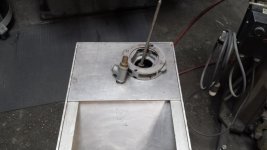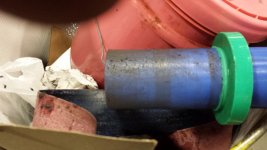ratbldr427
Titanium
- Joined
- Mar 21, 2006
- Location
- jacksonville,fl.
I have a G&L 460 SG.Very nice grinder,had it for over 20 years and never set it up to use coolant.I have a tank and pump and the grinder is set up to use coolant.
The only reason I haven't used coolant is because of the intermittent use it gets.I may use it all one day then not use it for a month or more.
So is there a coolant besides oil that will not degrade,or leave a sticky mess when it dries that will keep for a long time?
I'm using Cincinnati Cimcool in the lathes but I think it has changed since we started using it years ago.It seems to be sticker and notice that some rust build up lately that I've never noticed before.
The reason I want to now use coolant is that I cracked a 14x2 wheel last week.Scarry! My fault as I think I overheated it grinding some larger than normal pieces.
Any good recommendations.
The only reason I haven't used coolant is because of the intermittent use it gets.I may use it all one day then not use it for a month or more.
So is there a coolant besides oil that will not degrade,or leave a sticky mess when it dries that will keep for a long time?
I'm using Cincinnati Cimcool in the lathes but I think it has changed since we started using it years ago.It seems to be sticker and notice that some rust build up lately that I've never noticed before.
The reason I want to now use coolant is that I cracked a 14x2 wheel last week.Scarry! My fault as I think I overheated it grinding some larger than normal pieces.
Any good recommendations.



















